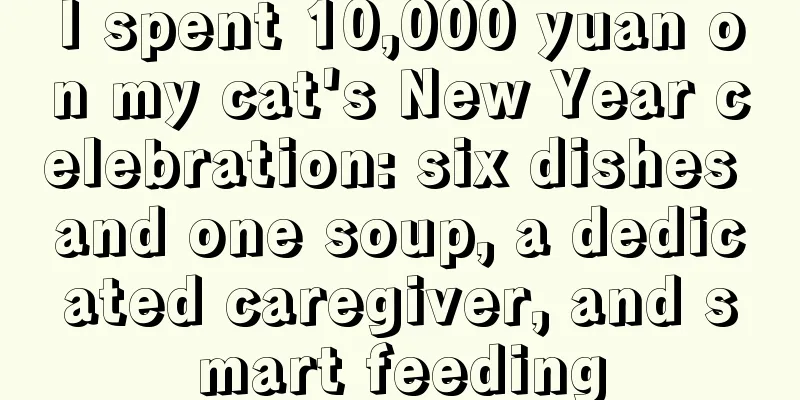10,000 words to explain the private domain KOC system and change the whole domain operation idea

In this article, I will talk about another key to the current omni-channel operation "KOX" - KOC (Key Opinion Consumer). Although KOC and KOS are only one letter apart, they represent completely different operating philosophies. The rise of KOS represents more of the embodiment of brand personality, representing the brand through shopping guides, sales, and internal employees, while establishing a trusting relationship with users or customers in a more authentic personal identity, rather than a condescending dialogue with the brand. The rise of KOC is essentially due to the lack of credibility in brand marketing, and KOC operations are becoming popular. As a personal representative of consumers, KOCs become the link between brands and users through their real usage experience and word-of-mouth communication. From the user's perspective, KOCs are real personal identities and do not belong to the brand itself, so in the eyes of consumers, there is no sense of "Wang Po selling melons and bragging about herself". Note: The “real” here refers to the real individual from the consumer’s perspective, but this “sense of reality” actually comes from the brand’s premeditated and careful planning. The following article will describe how KOCs act as brand mouthpieces to create this sense of reality. To be honest, running a KOC is not easy. It faces a series of difficulties, such as how to identify and cultivate real KOCs, how to stimulate the communication potential of KOCs, and how to maintain long-term relationships with KOCs. There are endless discussions on KOC operations in the market, including many cases of leading benchmark brands, such as the MINISO KOC case, which only shows the explosive surface effect but fails to see the hard work behind it. For most mid-tier and small and micro enterprises, it is really difficult to copy and refer to. In addition, people are sometimes easily misled by the operating methods of KOC, as if KOC operations can only be done on Xiaohongshu. Different industries have different methods, and KOC operations have their place in both the public and private domains. This article will systematically interpret KOC's thinking from private domain to global operation from a different perspective, opening up a new perspective on KOC's global operation. 1. What is the first principle of KOC operation?There are different interpretations of KOC on the Internet, usually simple and intuitive: “KOCs are simply amateur bloggers, whose characteristics are that their number of fans has just started, they are highly active, and they have a consumer identity.” "Most of them are ordinary people, or bloggers with a small number of fans, who tend to share. Their characteristics are small traffic, and KOCs are different from KOLs in that they are closer to their fans, so psychologically they will pay more attention to interaction with their fans and be more down-to-earth." But I think this is just a superficial understanding. In fact, the first principle of KOC operation is: from the perspective of target users, "KOC is a real ordinary consumer" , because only with the sense of authenticity can they gain the word-of-mouth trust of fan users, and then the trust of brands or products. From the brand's perspective, this is not the case. Brand KOCs may not be real consumers, but rather bloggers who seek to promote advertising, group leaders who seek distribution benefits, part-time workers who are hired to do private domain traffic generation, or even just virtual consumer accounts. The essence of KOC operation is a vivid performance that influences consumers through the magic of content. This KOC may be a real consumer or a virtual one created by the brand. There is word-of-mouth from real consumers, word-of-mouth based on profit, and also virtual water armies created by the brand itself. The appearance of KOC is an ordinary consumer, but the inner part is a marketing account matrix created through cultivation, incubation, cooperation and self-creation. 2. Breakthrough thinking: KOC also has categories?When doing systematic operations, the most feared thing is being led astray by a single platform and lacking analysis and thinking. After KOC was made popular by Xiaohongshu, everyone's attention may only be focused on the Xiaohongshu platform, and it can only be implemented through external cooperation. 1. Divided into public and private domainsSpecifically, it can be divided into public domain KOC and private domain KOC: 1) Public Domain KOC Consumer opinion leaders who are active on open social media platforms are not limited to specific platforms and are not necessarily focused on specific brands or products. For example, the catering industry uses Dianping.com to conduct KOC operations; the home improvement industry uses the Haohaozhu platform for KOC cooperation and sharing; the maternal and infant industry uses Mama.com to conduct KOC operations. Different vertical industries also have APPs and platforms, not just limited to Xiaohongshu or Weibo, a popular social media platform. Of course, it is necessary to evaluate the influence of public domain KOCs, which is usually measured by public indicators such as the number of fans, likes, and shares. However, if it is content distribution by amateur bloggers, more attention is paid to the authenticity of the content expression, winning by quantity, and not caring about data such as the number of fans. The quality of the published content is king. 2) Private Domain KOC Private domain KOCs are opinion leaders who are active in private channels controlled by brands, such as brand communities, VIP customer groups, APP communities, etc. The key point here is that private domain KOCs are not just common active users in social networks. Private domain KOCs can also be incubated on private domain touchpoints such as APPs and mini-programs. For example, the APP communities of car companies, such as Weilai, Ideal, and Xiaopeng, have done a good job in community operations, and have also formed car owner KOCs active on the community platform; For example, some knowledge payment platform apps, such as Fan Deng, Get, and Qianliao's Interest Island, have many active KOCs checking in and commenting. For brands, these users can enhance the content support of the platform's knowledge payment products through UGC content. Pictured is the Qianliao Interest Island Club Community What is assessed for private domain KOCs is their activity level and the recognition of them by other private domain users. Of course, they can also help brands bring in private domain sales and conversions. Private domain KOCs come from real users in the brand’s private domain community (of course, brand water army cannot be excluded), so these users have relevant actual product experience. At the same time, KOC's public domain content can also be used as private domain content, so it has a guiding role in group activity. The high trust of fans continuously cultivated in this process will also facilitate brand promotion among users in the future. 2. Classification by operational attributesThere are three categories: 1) Brand-loving KOC KOCs who truly love brands are “real users, real sharers”. They will actively spread the brand and even protect the brand. They have several obvious characteristics: ① Deep brand emotion: Brand-loving KOCs have an emotional connection with the brand that goes beyond that of ordinary consumers. They not only use the products, but also love the values and culture that the brand represents. ② Active communication: These KOCs will actively share brand information and recommend products in their social circles, even without direct rewards. ③ Content creators: They have the ability to create content related to the brand, whether through text, audio or video, and can express their support for the brand in their own way. ④ Community influence: Brand-loving KOCs usually have a certain influence in brand communities or related communities, and can guide community topics and trends. For example, NIO is a brand that is good at incubating true-love KOCs. In the operation of incubating brand KOCs, it does not motivate KOCs through rewards, but provides resources and privileges, such as professional content production support, interview training, etc., to help users improve their ability to create and share content. -Co-create brand content: Through platforms such as NIO Radio, NIO encourages car owners to co-create content. For example, lawyer car owners and NIO have created programs such as "Legal Refresher Station", allowing car owners to learn legal knowledge while driving on the NIO exclusive car owner channel, which not only spreads knowledge but also enhances the brand's community culture. -Shared brand rights: NIO further handed over sales rights to users. Through the "Owner Volunteer" project, old car owners or their families were allowed to participate in the introduction of new cars and experience sharing. This not only enhanced the user's sense of participation, but also deepened their bond with the brand. From sharing and co-creation, by delegating resources and privileges to KOC users, NIO dilutes the commercial concentration of brand content, allowing users to feel the warmth of the brand and the importance it attaches to them. Therefore, brand-loving KOCs serve the brand user community in terms of operations, prioritize the word-of-mouth of old brand users, and provide a brand community platform to allow ordinary car owners to become brand community KOCs. Based on their love for the product and brand culture, KOCs can create content for the brand, spread the word, and even bring in new customers. 2) Captive-breeding KOC The brand-loving KOC may be the best and most natural model for incubating KOCs for the best brands, but in fact not every category or brand has the ability to achieve this. Maybe every brand has its own loyal fans, but this spontaneous volume is difficult to form a voice. More often than not, brand companies are required to organize and incubate industries, and to form an organized and disciplined operating system. The captive and incubated KOC operation system focuses on identifying and cultivating KOCs with "willingness, content, and ability". If you only have the willingness but lack the ability to create content and network, you can become a sharing KOC. Brands can encourage users to speak for the brand through activities, discounts, gifts, etc. For example, sharing in Moments can get you the qualification to attend a class, receive materials, or get a chance to experience something. If they have the ability to create content, such as MINISO's KOC, they can be incubated through a grass-roots training camp, and then add points and experience activities to allow KOCs to debut as grass-roots ambassadors on the brand's Xiaohongshu; If you have connections and understand distribution and have the ability, then you can become a brand KOC through brand commission activities, through referrals or distribution, with the purpose of gaining profits. 3) Script-employed KOC The above two KOC models are incubated among the brand's own private domain users, and they promote the brand or bring in new users. However, the script-employed KOC builds KOC matrix marketing through external cooperation or script marketing. The first is external cooperation, which is the common form of advertising and cooperation with amateur bloggers KOC to create experience content around the products that need to be promoted. For example, many of the buyer's recommendations that we often see on Xiaohongshu are content created by advertisers and bloggers KOC based on promotion cooperation. The second type is internal virtual incubation, which is to create a matrix of amateur accounts (self-created accounts or recruiting part-time postings), and comment on relevant popular content or post product experiences on social media platforms as an amateur. In essence, there are no real users, and promotion and traffic are carried out through virtual packaging of personalities and construction of scripted content. This type is mostly used for private domain traffic diversion. For example, we have heard of some traffic diversion methods, such as: intercepting traffic, A type B collection, this type actually imitates the real consumer experience to attract user consultation and guide them to product purchases. 3. Three types of KOC personality requirements modelThe three types of KOCs have different application scenarios and purposes: 1) Brand-loving KOCs are loyal users of brands. They have deep feelings and identification with the brand and are willing to speak out and contribute to the brand unconditionally. Their importance lies in their ability to provide real user experience and word-of-mouth communication. 2) Captive-breeding KOCs are KOCs developed by brands through organized training and incentive mechanisms. They may not have as deep feelings for the brand as the brand-loving KOCs at first, but through the brand's support and training, they can become an important force in brand communication. 3) Script-employed KOCs : Brands use external cooperation and virtual script creation to form KOC marketing promotion. They may not have long-term emotional investment in the brand, but because of their professional content creation ability and market influence, or because of their virtual "real" consumer experience and feelings to influence target users, they can bring short-term high attention and sales conversion to the brand. Below, I have used a table to sort out what capability models are needed to build an excellent KOC, and the corresponding requirements for the different capabilities of the three types of KOCs, for everyone to use when formulating KOC capability portraits. When selecting or creating KOC personas, brands should not only strengthen the capabilities of the KOC themselves, but also pay attention to the strengthening of the above capabilities of the operations team. Often, the content influence of KOCs in public and private domains is linked to the capabilities of the team behind them. A hands-off approach to building KOCs is naturally not suitable for most products. Regardless of the type of KOC mentioned above, the ultimate goal is the same, which is to allow consumers to be influenced by the "real" KOC, output content that is sufficient to resonate with consumers, mobilize user demand, and shift users' attention to recommended brands and products. 4. What is the paradigm for building a KOC system?How to build a brand KOC system? MINISO's KOC system provides a paradigm for the answer, namely, its own public domain MCN + private domain KOC matrix. 1. Build your own public domain MCN1) Establishing an internal MCN: MINISO has established its own MCN organization internally, through which it achieves low-cost and efficient cooperation with influencers. 2) Talent network building: A network of more than 25,000 talents has been established to achieve widespread content dissemination and influence spread. 3) Cost control: Through the operation of its own MCN, MINISO has achieved a single-article delivery cost of less than RMB 500, effectively controlling marketing costs. 4) Content delivery strategy: On platforms such as Xiaohongshu, the number of MINISO notes far exceeds that of its competitors, and a high level of interaction has been achieved through a combination of commercial and non-commercial notes. 2. Private Domain KOC Matrix Construction1) Accumulation of private domain users: MINISO has accumulated a large number of private domain users through offline store traffic and online fission activities, laying the foundation for the KOC project. 3) KOC community management: A special community is established for KOC for unified management, and incentives and content co-creation are provided through the community. 4) Establishment of incentive system: MINISO has a complete KOC incentive system, which provides different rights and benefits according to the level of KOC to encourage content creation and sharing. 4) Improvement of content quantity and quality: By establishing advanced KOC groups, we promote discussions and experience sharing among KOCs. At the same time, the official provides hot topics and topics to help KOCs improve content quality. In the operation of "brand love KOC" and "captive incubation KOC", MINISO screens out potential KOCs that are highly consistent with the brand content, provides them with exclusive popular products and materials, and synchronizes the popular content to private domain users, forming a positive cycle and promoting the popularity of popular products in the public and private domains. 5. How to incubate private domain KOCs to become popularBoth "KOCs who truly love brands" and "KOCs who are raised and incubated" are incubated in the private domain and then break out of the circle in the public domain, and then feed back the brand's reputation or sales transactions in the public and private domains. From the perspective of incubation and cultivation logic, KOC incubation comes from users who have completed transactions. New customers and member users are the sources of incubation into KOCs, and the cultivation and incubation of KOCs is carried out through cognitive education + recruitment activities + incentive training + resource support + KOC fission group layer cultivation. The following is a practical construction of private domain KOC incubation and out-of-circle from four dimensions: recruitment, screening, motivation, and support: 1. KOC recruitment full linkFirst of all, we need to formulate the purpose and content of KOC recruitment. The categories can be roughly divided into new product trials, user experience collection, grass-roots recommendations, distribution and sales, etc. Secondly, determine the private domain recruitment channels including: WeChat ecosystem, brand private domain pool (APP, targeted member recruitment), cooperative sales channels, etc. Screen out users who have product usage experience and actively participate in activities from private domain users, and identify individuals with the potential to become KOCs, such as purchase amount, purchase frequency, and brand loyalty. Through these, we can understand whether they have a certain level of awareness and loyalty to the brand, and whether they can convince other users of their recommendations. Take a brand-wide KOC recruitment link as an example: In terms of recruitment, we can conduct active recruitment through our own touchpoints, explore and identify potential KOCs, and consider store, community, and one-on-one targeted recruitment. Secondly, before recruiting, you need to design whether it is a one-time mechanism or a long-term mechanism. For example, for skin care brands, recruiting private domain KOCs can be done in batches based on the launch of new products, starting with online and offline touchpoints. For example, the new retail brand "Sanfu" has integrated recruitment registration + event theme + incentive mechanism into its own mini program, forming a long-term KOC recruitment mechanism. By setting different themes every month, it attracts people to become brand KOCs, and then gives incentives such as points to be spent as money based on the effectiveness of the content published and whether the standards are met. 2. KOC screening and supportIn terms of the KOC incentive mechanism, not only do we need more people to participate in brand KOC, but we also need to have quality in addition to quantity. Since private domain KOCs are very likely not to have the ability to create content, it is necessary to screen and support the applicants. 1) Selection mechanism to select the best from the best Taking MINISO as an example, since all kinds of products are naturally beautiful, interesting and interactive, and various authorized IPs and self-operated IP products have been deeply rooted in the hearts of consumers through high-breadth word-of-mouth communication, the number of people who sign up for KOC recommendation far exceeds the number of recruits each time, as can be seen from the following data from Fenxi Think Tank statistics. The registration success ratio for popular grass-growing activities has reached 50:1, and even for ordinary products it is 17:1. The competition is fierce, so we can select the best of the registered KOCs based on the size of the grass-growing accounts and the quality of the content notes. From the WeChat public account "Song Xing's Digital View": MINISO KOC operation strategy At the same time, MINISO's KOC will also form such a screening and incentive mechanism, ensuring that every KOC can obtain rights and benefits that match their contributions through a strict screening mechanism. The threshold for becoming a junior KOC is to successfully publish at least one note, giving them the opportunity to participate in all-category promotion activities. This initial screening ensures the KOC’s activity and willingness to participate. As KOCs publish multiple notes in succession, their performance will be evaluated and they will have the opportunity to be promoted to intermediate KOCs, at which point officials will provide richer benefits based on their contributions. Furthermore, when a KOC publishes a hot article, that is, the number of interactions (likes, comments, collections) reaches or exceeds 1,000, they can be upgraded to a senior KOC. This high-standard screening mechanism ensures that only those KOCs who can produce real influence and high-quality content can be invited to the senior community and enjoy more official support and rewards, including cash rewards. However, MINISO’s screening mechanism also focuses on continuous performance. If a KOC shows poor data after publishing multiple notes in a row, they will be eliminated from the advanced KOC group. This dynamic screening and promotion mechanism not only motivates KOCs’ creative enthusiasm, but also ensures the quality of community content and the positive influence of the brand. 2) Support mechanism to complement each other’s strengths A healthy private KOC incubation system is inseparable from a user support mechanism, whether through incentive support, content training, or traffic support. For example, MINISO supports KOC content quality in four aspects: First, content support: MINISO will screen hot topics for brands and provide creative inspiration for KOCs, such as the popular blind box weighing notes; Second, training and support: There is also a KOC mentor system, that is, some KOC experts in the group share their own popular articles, forming official content training and support for everyone in the community, and also playing a role of mutual encouragement; Third, data support: feedback on data of popular article samples, share some excellent works of private domain KOCs through the grass-planting training camp community, and form private domain data feedback; Fourth, incentives and support: As mentioned above, there will be graded rewards based on note data. At the same time, some traffic support will be given to excellent notes to support note traffic. In addition, the platform officially organizes a KOC training program to provide continuous support for basic-level KOCs. For example, the home improvement app Haohaozhu conducts a series of training in private communities in conjunction with creator KOCs. Help Sumitomo KOCs with content positioning, differentiation, content profiling, topics, and content production methods, and form a support mechanism from official courses to Q&A. The selection and support of KOCs may seem contradictory, but they actually serve the same goal, which is to increase the number and quality of KOC services: The selection of KOCs is aimed at increasing the number of KOCs with quality as the goal. In order to find more suitable users and seeding content among the massive KOCs, we select high-quality KOCs for brand use and select high-quality content to speak for the brand. Support for KOCs, content improvement based on quantity. Helping a large number of potential KOCs to improve their content level, allowing more people to participate while providing them with resources and content support, so that everyone can become their own KOC in addition to becoming a brand KOC. It is a win-win operation strategy, so why not? 3) KOC user lifecycle management Private domain KOC also has a life cycle. How to refine and normalize the operation is a test of the brand's management mechanism. Without methods and goals, it is easy to kill the KOC operation. Under the premise of maximizing the participation and influence of KOC, it is necessary to build a good relationship with KOC and do a good job in the life cycle operation management of KOC users: Let KOC continue to be the "owner" of the brand to gain a sense of participation, and let KOC continue to be the "spokesperson" among users to help the brand speak out with real experience. Then we need to give KOC exclusive identities, exclusive rights and exclusive support. The specific details include task management, activity management and hierarchical operation details: First, KOC daily task management Regularly issue content creation and sharing tasks to KOCs to ensure that they are aware of the brand’s latest developments and promotion priorities. Based on the KOC's task completion and content quality, corresponding rewards, including points, coupons, cash rewards, etc., are given, and detailed activity guidance and explanations are provided to help KOC better understand the purpose of the activity and how to participate. Taking the Sanfu KOC grass-planting mini program as an example, there are clear entrances and guidelines for each activity note type, task content specifications, and registration methods, so that participants can clearly understand the purpose of the activity and how to participate. Second, KOC activity incentive management In the private KOC community, we continuously organize interactive competitions among KOCs, such as likes competitions, to increase community activity and content dissemination. We provide a brand material library, encourage KOCs to participate in the design of creative materials, and provide brand elements and design guidelines to make KOC works more brand-specific. At the same time, we continue to share high-quality KOC content in private KOC communities so that everyone can learn. In addition, we officially share it in private general grass-planting communities to increase the exposure of excellent grass-planting content and enrich the community content marketing methods. Third, KOC hierarchical operation management Based on KOC’s task completion, content creation foundation, skill level and social media influence, KOCs are divided into high-quality KOCs, standard KOCs and quasi-KOCs, and managed in layers. Carry out personalized incentive strategies and customize personalized incentive measures for KOCs at different levels, including exclusive rewards, priority participation rights, etc., to meet their personalized needs. In particular, we should focus on maintaining high-quality KOCs, establish separate communities for the selected high-quality KOCs, provide a more focused communication and collaboration platform, give priority to solving the problems of high-quality KOCs, give more resources and benefits, stimulate the potential of high-quality KOCs, and enable them to play a greater role in the full-area promotion of KOCs. 6. Distribution Operation of Private Domain KOCAs explained in the previous article, KOCs not only have a way of speaking out for brands, they can also participate more deeply in the brand sales process. For KOCs with connections and capabilities, obtaining "sales commissions" is one of the best ways for KOCs to become loyal supporters of a brand. KOC distributes products through social networks within the private ecosystem, which not only accelerates the spread of brand information, but also brings in new potential customers through user fission, effectively improving conversion rates and the brand's overall marketing effectiveness. The first type: self-purchase and money-saving mode As a distributor, KOC maintains their status by completing simple tasks (such as writing product usage notes) and enjoys first-order discounts and long-term preferential prices. The second type is the sharing commission model KOC drives product sales by sharing exclusive QR codes and earns sales commissions from them, realizing a model where sharing means making money. The third type: the group leader/agent earns commission model KOCs are required to invest time and energy in establishing and operating their own customer systems, and are incentivized to conduct user management and sales promotion by offering a higher percentage of sales commissions. Onion Omall's KOC distribution system is a KOC distribution system that combines saving money by purchasing by yourself, sharing commissions, and starting group sales with agents. From the brand concept, it provides spiritual emotions and money-making emotions, emphasizes sharing beautiful things with millions of KOCs and earning extra income, so that the business model of brand planting is not just B2C, but B2C2C, allowing every KOC to participate in sales. Of course, social distribution here is actually a membership distribution model, selling membership + selling goods. In simple terms, there are three levels of income: First, you can save money by purchasing it yourself; The second level is to earn commissions by distributing goods; The third level is to become a service provider and recruit paying members. With the honorary store owner model, you can enjoy the first and second level rights and interests by paying 1,000 yuan to the KOC service provider. If you want to become a service provider KOC from an honorary store owner KOC, you need to pay an additional 10,000 yuan. Once you become a service provider KOC, you can recruit members and earn meeting fees. Therefore, through this interpretation of the model, the KOC distribution system requires the product or service model to have a higher profit margin so that the profits can be passed on to KOCs. At the same time, KOCs will have a higher enthusiasm to participate in brand sales. Although MINISO also belongs to the retail category and also has a user KOC system, its cost-effective model is obviously very different from Onion's paid membership model. This is why MINISO is a brand-seeking KOC, while Onion is a private-domain distribution KOC. The specific operating methods of private domain distribution KOC will not be elaborated here. This time, we will mainly explain the difference between private domain distribution KOC and brand seeding KOC, so that everyone can have a more intuitive understanding of different KOC operating models, rather than staying on the single model of brand seeding KOC. 7. Tricky but useful script-style KOCBoth the brand-loving and captive-incubation KOCs are operated based on real users. They are real brand consumers, but most of the script-hired KOCs are not brand consumers. Advertising cooperation belongs to the mercenary model, and product delivery based on advertising fee cooperation is not going to talk about this kind of conventional model. This time I will talk about the model that you often see but do not regard as KOC operation: brand virtual KOC. Do you remember the first principle of KOC operation mentioned at the beginning? That is, from the user's perspective, what they see is a "real" KOC, and they don't need to care whether he has really purchased or exists. So, although it is a bit shameful to take shortcuts, it is indeed useful in marketing operations and can be divided into two categories: The first type: private domain script-style KOC That is what we often see or call social network water army. For example, when doing a private community sale, in order to heat up the sales atmosphere, we deploy several social network water armies to respond to the brand’s voice, post payment screenshots, and praise brand activities. Generally, you need to prepare a SOP for sales talk and release it in line with the rhythm of the event and the community SOP. The second type: public domain drainage KOC By creating amateur accounts in the public domain, you can attract fans and traffic. You will often hear about "A kind of B is distributed by amateurs". In simple terms, it is to recruit part-time workers to comment and attract traffic under the content where the target group gathers, or to publish material content by yourself to attract users to comment privately, and then guide customers to the brand's private domain. The core is to package them as real consumers to attract content traffic. Finally, we calculate their commission based on the volume, which is equivalent to producing the content by themselves, distributing it to part-time workers, and then doing the process of private domain traffic diversion. If you find that the traffic of a certain amateur account has exploded, immediately arrange for another amateur account to put bait in the comment section to intercept the traffic, and then pin it to the top to increase the amateur script comments to attract traffic. In this way, we can intercept large and accurate traffic through batches of amateur KOC accounts, and the drainage process is also very smooth, because the amateur accounts are distributed in different places, with different IPs, different devices, and even different content. All operations are normal, so a large number of account bans are reduced. Hiring script-based KOCs can be summarized into the following five operational details:
Change your thinking and tap into the business value of KOC KOC builds a bridge of trust between brands and consumers. They are the disseminators of brand voices and the sensors of market pulses. On top of all these strategies and practices, we must reiterate the first principle of KOC operation: "From the perspective of target users, 'KOC is a real ordinary consumer'". This principle is the core of successful KOC operation. It requires us to always maintain the user perspective in operation, ensure the authenticity and credibility of KOC, and thus gain the trust of fan users and word-of-mouth communication. At the same time, I would like to use this article on the KOC operation system to demonstrate a comprehensive understanding of the KOC system, break through some misunderstandings in vision and rebuild and operate it, and how to stimulate the potential of KOC through refined management and incentive mechanisms to help brands and consumers connect more deeply. The same as the operating system of KOC and KOS, the ultimate goal is to influence people through people. Brand companies should consciously establish their own more multi-dimensional global operating system. Such a system cannot give you a complete answer in just two long articles, but I believe it can give you a new idea for finding the answer. Of course, if you have any unclear points about how to build your business from a private domain to a global system, let’s discuss and communicate together. Author: Xiaofeng's Operational Growth Source: WeChat official account: "Knowing Operational Thinking (ID: LearningBeta)" |
<<: What role should copywriters play and what functions should they assume?
>>: If you want to do marketing and sales, you must know these points
Recommend
In which country does Amazon not have a site? Which site is better?
As a cross-border e-commerce platform, Amazon has ...
Short dramas during the Spring Festival: Fighting in public, having fun in private
During the 2025 Spring Festival, the short drama m...
After 9 years of operation, how do I understand "user growth"?
Editor's note: In this article, the author sha...
Stop calling customers and sending group messages on WeChat
Why is it that marketing services that cast a wide...
In 2024, how should overseas brands formulate video marketing strategies?
Nowadays, immersive short videos have become a for...
How many orders can Shopee place in a day? How to increase the order volume?
After opening a store, Shopee merchants need to fi...
IKEA, another great copywriting!!!
IKEA, a brand known for its creative home furnishi...
New Year's co-branded models: the undefeated Chinese style, the people-friendly cartoon style, which one do you pick?
The Spring Festival is a traditional festival that...
SHOPEE cross-border payment can be received in advance
In order to speed up your capital turnover and sho...
Announcement on the official implementation of the third batch of categories of Dunhuang.com seller certification line rules
On June 9, 2023, Dunhuang.com officially invited a...
How to provide after-sales service for items purchased from Amazon? What after-sales service is available?
Today I will introduce you to some content about A...
How many orders are normal on eBay per day? How can I increase my store sales on eBay?
eBay is an excellent cross-border e-commerce platf...
How data analysis guides operational decisions
How can data analysis really guide operational dec...
As the head of operations, how do you coordinate projects?
This article introduces in detail the process of t...
What is a normal Amazon ACOS? How to calculate it?
Nowadays, when you open a store online, you must m...









